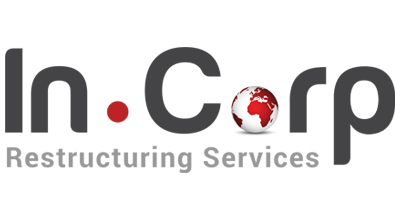Debt Syndication: A Strategic Finance Solution for Businesses

Debt Syndication: A Strategic Finance Solution for Businesses
Learn how debt syndication fulfils the financial needs of businesses and boosts business growth
- Last Updated
Debt syndication is completely transforming the financial world. The following research conducted by McKinsey proves this point as it clearly shows that debt syndication loans have been rising at a constant pace of 4% CAGR. But what is debt syndication? Well, it is a financial tool which brings together many lenders on the same platform, who then collectively offer a loan to a borrower. Are you excited to know about the benefits of this financial tool? Let us look at the main benefit over here. Suppose a real-estate developer decides to construct an adventure park on the outskirts of a city. Let us suppose he wants Rs. 10,000 crores to begin construction. Do you think a single lender can provide such a large amount of money? The clear answer is no. So, how does debt syndication offer a solution to this problem? It allows multiple lenders to pool their money and collectively provide a loan to this developer. This will allow the developer to access the large amount of corpus it needs to begin the construction of the adventure park and enable the lenders to eliminate the risk involved in giving out such a huge amount of loan.
In this blog, we will understand what debt syndication is, what are the challenges you are most likely to face, and how it can help businesses grow.
Debt Syndication
Debt syndication creates a platform where many lenders come together to provide loans to businesses that need a large amount of capital. Let us first learn about the players involved in the process. So, the debt syndication process consists of the borrower who wants to raise the capital; the lenders which provide the loan to the borrower; the lead arranger which oversees the entire process and ensures that everyone is adhering to the terms and conditions outlined in the final proposal. Now that we have got a brief gist of the players involved, let us understand how the entire process is conducted from start to finish.
In the beginning, the borrower conducts a thorough analysis of the amount of capital needed to carry out the task to boost business growth. Once all the numbers are ready and everything is documented, the borrower explores banks that can help fulfil their financial needs. The first choice is always a large financial institution that has years of experience in the industry in which the borrower is operating. This bank is called the lead arranger. It scrutinizes the financial health of the borrower, which includes checking the amount of capital the borrower needs, the main objective of raising the capital by the borrower and determining whether the borrower will be able to repay the loan within the agreed timeframe or not.
Then, the lead arranger drafts a loan proposal and holds discussions with other lenders who are interested in becoming a part of the syndicate. Once these lenders agree to the proposal and sign the document, the lead arranger deposits the capital into the borrower’s account. An important point to note over here is that the lead arranger may or may not disburse the whole loan amount due to a few regulatory restrictions.
The loan proposal that we talked about contains important terms and conditions such as payment schedule, interest rate, and covenants that every player agrees to honor throughout the duration of the agreement. It acts as a safety valve because it protects the financial interest of the lenders in situations where the borrower fails to repay the loan. How? Suppose 10 lenders provide Rs. 10 crores each, and if the borrower fails to repay the loan, then each lender will only lose Rs. 10 crores instead of Rs. 100 crores if the loan had been provided by a single lender.
Benefits of Debt Syndication for Businesses
In the above section, we learned how debt syndication enables businesses to get a large amount of money. In the following section, we will learn about the benefits of debt syndication and how it promotes business growth in the short term and the long term.
1. Getting a large sum of capital to carry out business operations
Let us understand this with the help of an example. Assume, a real-estate company wants to build an adventure park. It conducts financial analysis to figure out how much capital will be required to start the construction. The analysis reveals that Rs. 1,000 crores would be the amount required to complete the project. After determining the needed capital, the senior management conducts several rounds of discussions and finally decides to approach a bank to get a loan. Unfortunately, the bank does not agree to provide such a large loan all by itself due to the inherent risk involved. Now, this bank tells the company that it can provide the required funds if other lenders collaborate with it to provide a portion of the loan and distribute the risk among themselves. The company agrees to this proposal after which this bank, which is called the lead arranger, prepares a loan agreement. The lead arranger uses this agreement to identify lenders interested in participating in this loan disbursal exercise. Once this group of lenders, including the lead arranger, agree to offer a collective loan, the business acquires the funds needed to execute the project.
2. Diversification of risk between the syndicate members
In the above example, there is a very high chance that the group of banks would provide the loan to the business because the risk is distributed among all of them. For example, let us assume that the borrower wants a loan of Rs. 1,000 crores and 10 banks have united to provide the loan. In this case, each bank will contribute Rs. 100 crores, which means that the risk for each bank has been reduced by 90%.
3. Receiving expert guidance from financial advisors
Throughout the debt syndication process, businesses hold several meetings with their lead arrangers to ensure the capital flows smoothly at regular intervals to their bank account. But there are many other benefits that businesses enjoy. For example, the lead arranger is a large institution that has several financial advisors who understand the nitty gritty of the financial markets. These professionals share expert guidance, enabling businesses to sail through complex financial challenges. Moreover, they also provide access to vital industry contacts that play an important role in assisting the business to achieve their short and long-term goals, thereby boosting their business growth.
4. Ensuring that the borrower repays the loan at regular intervals
The debt syndication agreement clearly mentions that the borrower and the lenders must comply with the terms and conditions mentioned in it throughout its duration. These terms can include low interest rates, a change in the duration of the loan based on the project’s ability to generate cashflow, etc. Lenient terms and conditions come as a breath of fresh air as they take away undue pressure on businesses to outperform in a short duration of time.
Do you know: If the lenders believe that there is a very high chance that the business will repay the loan on time, the latter can get the funds at favorable terms.
5. Build strategic relationships with lenders
Do you know what the biggest advantage of debt syndication is apart from helping businesses get the required funds to boost business growth? It is the golden chance of building strong and evergreen relationships with lenders. Are you wondering how does it helps? Well, developing robust relationships allows businesses to seek financial aid at favorable terms in the future. This can be of great help when a business faces hurdles due to which it might get difficult to get loans from traditional financial institutions.
The A to Z of Debt Syndication
The steps below will provide a detailed description of the debt syndication process from assessment to disbursement.
1. Assessment of the financial needs of the borrower
The debt syndication process begins when the finance department in the company analyzes the amount of funds required to carry out the task. Let us go back to the real-estate developer who requires funds to construct an adventure park. The process begins with the finance department analyzing the capital required to begin the construction. Once this figure has been calculated, the next step is to determine the most suitable financing structure that will act as a catalyst to ensure business growth.
2. Appointment of the Lead Arranger to oversee the process
A large bank usually plays the role of a lead arranger. Its main responsibility is to monitor the entire debt syndication process, from assessing the financial needs of the borrower to ensuring that the funds are credited to the bank account of the borrower. This lead arranger will play an important role in structuring the deal for businesses, negotiating favorable loan terms with prospective lenders, and acting as the primary point of contact between the syndicate of lenders and the borrower.
3. Creation of the Information Memorandum
The lead arranger creates an information memorandum that contains the important terms and conditions about the business’s financial requirements, such as the primary objective of the loan, the borrower’s creditworthiness, and the repayment schedule.
4. Identification of the most suitable lenders who can join the syndicate
After the lead arranger creates the information memorandum, it begins searching for financial institutions that have a long history and rich experience of providing loans to businesses operating in the same industry. The lead arranger holds several discussion rounds with multiple lenders to understand the terms and conditions they would want to contribute a part of the loan. The lenders can vary from traditional financial institutions like banks to private equity firms.
5. Conducting Due Diligence by lenders
Before agreeing to becoming a part of the syndicate and offering a portion of the loan to the borrower, the lenders conduct due diligence to get a clear view of the borrower’s financial status. But what are the exact parameters that the lenders check in this stage of the debt syndication process? They assess the borrower’s business model, financial statements, current market conditions, global economic landscape, and future score of the project.
6. Term Sheet Negotiation between the borrower and syndicate
After the due diligence process is completed and the business has successfully passed through the parameters set by various lenders, the terms and conditions of the loan agreement are discussed by all the parties. This negotiation process generally covers three important areas, including the rate of interest, the total amount of money required by the borrower, and the time in which the borrower will repay the loan. This negotiation ensures that the deal benefits every stakeholder and facilitates business growth.
7. Final agreement signed between the borrower and the syndicate
A final document is prepared and signed by the borrower, lenders, and the lead arranger after the negotiations between all these stakeholders conclude. This document highlights the business’s responsibilities, each lender’s role, and the disbursal mechanism.
8. Release of funds and checking how it’s being used
After all the stakeholders in the debt syndication process have successfully signed the agreement, the funds are deposited in the borrower’s bank account. This is done under the complete supervision of the lead arranger, who also checks whether the business is using the funds appropriately or not. This monitoring is necessary as it ensures that the capital is used only for business growth and the company adheres to the terms and conditions mentioned in the agreement.
Conclusion
Our above discussion clearly points out that debt syndication is beneficial for both businesses and lenders. On the one hand it allows businesses to raise the required capital to meet their financial needs and promote business growth. And on the other hand, it forms a union of lenders where each member provides a portion of loan, reducing their risk if the business fails to repay the loan. Due to these benefits, the debt syndication market has increased by 1.3% every year from 2015 to 2022. Therefore, it can safely be said that businesses would not have to bear a lot of trouble finding lenders who can provide loans as the latter have been increasing at a healthy rate.
Why Choose InCorp Advisory?
At InCorp, our experts have a lot of experience assisting businesses to achieve their financial goals by customizing their debt structure. We have a team of more than 25 experts who have enabled businesses to raise a whopping 1500+ crores in the last few years. Our experience of serving 10+ sectors and our big network of 70+ lenders will allow you to get the funding you require for boosting your business growth. To know more about our debt syndication process, contact us at (+91) 77380 66622 or email us at info@incorpadvisory.in.
Frequently Asked Questions (FAQs)
What does debt syndication mean?
We started this blog with the example of a real estate developer who wants funds to construct an adventure park. According to our example, the developer needs Rs. 1000 crores for the construction. Now, a single bank would not be interested in providing such a big loan. So, what should the developer do to boost his business growth? This is where debt syndication comes into the picture as it creates a ground for multiple lenders to come together and offer a portion of the loan to the developer. This financial arrangement allows businesses to borrow a larger amount of capital than they would have obtained from a single lender.
Why has debt syndication suddenly caught the fancy of banks?
In debt syndication, each lender offers a portion of the loan to the borrower, which means that every lender is responsible only for the part they have contributed. This helps to significantly reduce the risk that each lender carries, and hence debt syndication has suddenly caught the fancy of banks.
Is it necessary for businesses to sign agreements with all the lenders which are a part of the debt syndication?
No. Businesses typically have to enter into a single agreement.
As per the current financial conditions, which type of businesses can greatly benefit from debt syndication?
In the current business landscape, businesses of all sizes, including SMEs and big organizations, seeking large amounts of capital for business growth can benefit from debt syndication.
What kind of impact can you expect a lead arranger to have on the debt syndication process?
The most important point that you should remember about the lead arranger is that it is the biggest lender among all the other lenders in the syndicate. And what are its responsibilities? Firstly, to create the information memorandum to attract other lenders who would be willing to contribute a portion of the loan. Secondly, to decide and finalize the terms and conditions that will appear in the final agreement, and which will have to be honored by all the stakeholders in the debt syndication process. And last but not the least, the lead arranger also ensures that the funds are deposited into the borrower’s account and that the borrower uses them only for the purpose originally stated by it in the loan proposal.
We started this blog with the example of a real estate developer who wants funds to construct an adventure park. According to our example, the developer needs Rs. 1000 crores for the construction. Now, a single bank would not be interested in providing such a big loan. So, what should the developer do to boost his business growth? This is where debt syndication comes into the picture as it creates a ground for multiple lenders to come together and offer a portion of the loan to the developer. This financial arrangement allows businesses to borrow a larger amount of capital than they would have obtained from a single lender.
In debt syndication, each lender offers a portion of the loan to the borrower, which means that every lender is responsible only for the part they have contributed. This helps to significantly reduce the risk that each lender carries, and hence debt syndication has suddenly caught the fancy of banks.
No. Businesses typically have to enter into a single agreement.
In the current business landscape, businesses of all sizes, including SMEs and big organizations, seeking large amounts of capital for business growth can benefit from debt syndication.
The most important point that you should remember about the lead arranger is that it is the biggest lender among all the other lenders in the syndicate. And what are its responsibilities? Firstly, to create the information memorandum to attract other lenders who would be willing to contribute a portion of the loan. Secondly, to decide and finalize the terms and conditions that will appear in the final agreement, and which will have to be honored by all the stakeholders in the debt syndication process. And last but not the least, the lead arranger also ensures that the funds are deposited into the borrower’s account and that the borrower uses them only for the purpose originally stated by it in the loan proposal.
Share
Share







































































